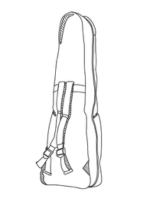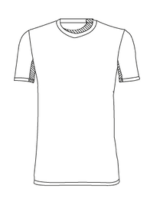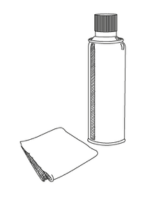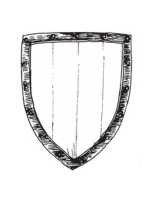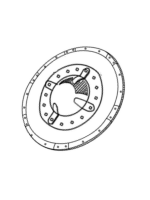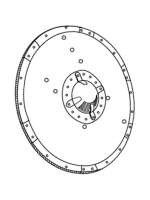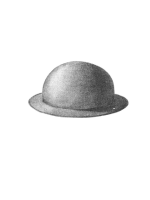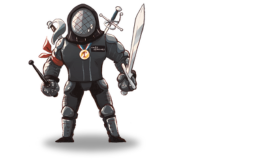-
MenuBack
- Home
-
Swords & Weapons
-
-
Protections
-
-
Accessories
-
-
Shields
-
- DEALS!
- [PACKS]
- Ideas
- Blog
-
Contact
-
-
Become a Partner ClubJoin the FAITS D'ARMES partnership program and benefit from an exclusive discount for your club.
-
-
Return a productWould you like to change a product or get a refund? Let us help you
-
-
- FAITS D'ARMES
- 28 rue du Gamay
- 63270 Vic le Comte
- FRANCE
- renaud@faitsdarmes.com
- 07 84 54 76 66
- Write to us on WhatsApp
-
-
Fencing Mask 350N vs 1600N
When it comes to practicing fencing or Historical European Martial Arts (HEMA), choosing the right equipment is crucial to ensure both safety and performance. Among the essential elements of this equipment, the fencing mask holds a prominent place. That's why it's important to understand the differences between 350N and 1600N fencing masks, in order to make an informed choice based on your specific needs.
1. What does the N represent
Before diving into the specifics of 350N and 1600N masks, let's understand what the "N" in these designations means. The "N" refers to the Newton level, a unit of measurement that assesses the fabric's resistance to puncture. The higher the number of Newtons, the more resistant the fabric is to puncture.
In this context, fencing masks are generally classified into two main categories according to the European standard EN 13567, which defines the requirements for fencing equipment:
- a 350N mask corresponds to level 1 (CEN level 1)
- a 1600N mask aligns with level 2 (CEN level 2)

2. Which part of the mask is concerned?
It is important to dispel a widespread but incorrect idea:
The resistance index mentioned, whether it is 350N or 1600N, refers exclusively to the mask's bib and not to the grid.

The bib, which is made of fabric to allow good neck mobility, is inherently less resistant than a steel grid. That's why the bib's puncture resistance is a crucial safety criterion.
Regarding the mask's grid, the Newton index does not apply in the same way because the main risk is not puncture but rather deformation under impact. The grid is designed to absorb shocks and prevent injuries by preventing weapons from passing through or causing direct damage to the face. The standards and tests applied to the grid therefore aim to ensure its solidity and its ability to maintain its shape under impact, rather than measuring its resistance to puncture as is the case for the bib.
3. Which mask to choose for HEMA?
It is essential to understand that these equipment resistance standards were primarily established for Olympic fencing, where the risk of puncture is accentuated by the use of weapons with fine points and the prevalence of thrusting attacks.
On the other hand, the weapons used in HEMA are generally blunted, i.e. their tips are modified to reduce the risks of puncture: the tip can be folded back, or covered with a leather or rubber cap. This significant modification greatly reduces the risk of puncture during training or fights.
Therefore, a fencing mask with a resistance of 350N offers sufficient protection for HEMA practice, taking into account the nature of the weapons used, of course.
However, it is important to consider that some HEMA competitions may adopt stricter regulations regarding protection and equipment and some may require a 1600N mask to participate. This measure aims to ensure a maximum level of safety for all competitors, especially in contexts where the intensity and force of the blows can be higher.
If you are considering participating in HEMA competitions, it is therefore wise to consider acquiring a 1600N mask. Opting for equipment that meets the highest protection standards not only ensures better personal safety, but also prevents you from being unable to participate in events that impose stricter protection criteria.
In brief:
- For most HEMA training and sparring situations, the 350N mask is sufficient.
- However, a 1600N mask will be necessary to participate in certain competitions
4. How to check if my mask is a 350N or a 1600N?
Visually, it is difficult to distinguish a 350N mask from a 1600N mask as the bib and fabric may seem identical. However, there are several methods to determine the standard of your mask.
For masks of the brand FAITS D'ARMES, for example, a simple way to distinguish the resistance is to check the color of the inner padding: Blue padding indicates a 350N mask, while black padding means a 1600N mask.
This feature specific to the brand allows for quick and easy identification.

In addition, the most reliable method to verify the standard of your mask is to look for the mandatory printed mentions that inform about the mask's certification. These details are usually printed on the metal tab located at the back of the mask.
- A "Level 1" mention means that your mask is 350N certified
- A "Level 2" mention indicates that the mask is 1600N certified, making it suitable for advanced practitioners, competitions
If none of these inscriptions are present on your mask, this may indicate that the mask has not passed the mandatory certification tests. In this case, it is strongly recommended to change the mask for a certified model, to ensure your safety when practicing fencing. Always make sure your equipment meets the appropriate safety standards for the type of practice you undertake.
Shopping Cart
Cart is empty
-
MenuBack
- Home
-
Swords & Weapons
-
-
Protections
-
-
Accessories
-
-
Shields
-
- DEALS!
- [PACKS]
- Ideas
- Blog
-
Contact
-
-
Become a Partner ClubJoin the FAITS D'ARMES partnership program and benefit from an exclusive discount for your club.
-
-
Return a productWould you like to change a product or get a refund? Let us help you
-
-
- FAITS D'ARMES
- 28 rue du Gamay
- 63270 Vic le Comte
- FRANCE
- renaud@faitsdarmes.com
- 07 84 54 76 66
- Write to us on WhatsApp
-
-










